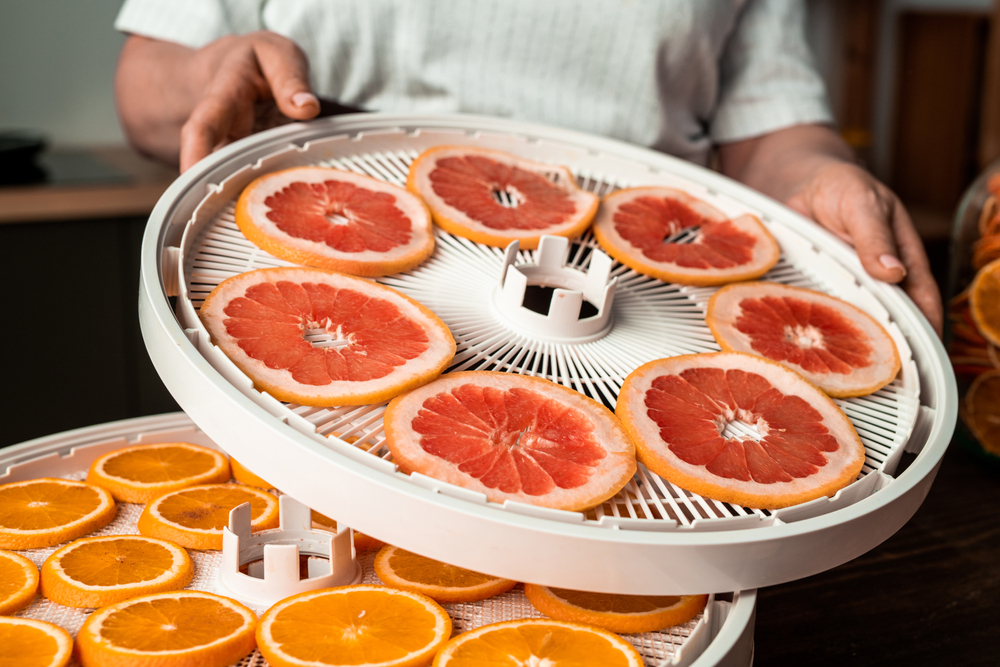Food dehydration is a process of removing the moisture content from food items to extend their shelf life. By reducing the water content, the growth of microorganisms that cause spoilage, such as bacteria, yeast, and molds, is inhibited. This preservation method has been used for centuries as a way to store food for longer periods without the need for refrigeration.
There are various methods of dehydrating food, including:
- Sun Drying: Traditional method where food is laid out in the sun to dry naturally.
- Air Drying: Involves using circulating air to remove moisture from food items.
- Oven Drying: Food is placed in an oven at low temperatures to facilitate dehydration.
- Dehydrator: Specialized appliances known as food dehydrators are designed for this purpose, providing controlled temperature and airflow to efficiently remove moisture from foods.
Commonly dehydrated foods include fruits, vegetables, herbs, and meats. Once the moisture is removed, the food becomes lightweight, compact, and resistant to spoilage. Dehydrated foods can be rehydrated by adding water before consumption. This preservation technique is popular for camping, hiking, emergency preparedness, and as a way to store seasonal produce for later use. Additionally, dehydrated foods can be used in various culinary applications, such as snacks, soups, stews, and more.
Process of Food Dehydration:
- Preparation: Before dehydration, food items need to be cleaned, peeled, and sliced to ensure even drying.
- Loading: The prepared food is arranged on trays or racks, leaving enough space for air circulation.
- Dehydration: The method chosen (sun drying, air drying, oven drying, or using a dehydrator) exposes the food to controlled temperatures and airflow. The goal is to remove water content without cooking the food.
- Monitoring: Throughout the dehydration process, it’s essential to monitor temperature and time to prevent over-drying or under-drying.
- Testing: Food is considered adequately dehydrated when it reaches a specific moisture content, which can be tested by checking the texture and flexibility of the dried pieces.
Factors Influencing Dehydration:
- Temperature: Higher temperatures generally result in faster dehydration, but it’s essential to balance this with preserving the quality of the food.
- Humidity: Lower humidity facilitates faster water evaporation. High humidity can slow down the dehydration process.
- Size and Thickness of Food Pieces: Smaller pieces and thinner slices dehydrate more quickly and evenly.
- Air Circulation: Proper airflow ensures that moist air is continuously removed from the drying environment.
Types of Food Suitable for Dehydration:
- Fruits: Apples, berries, bananas, mangoes, and more.
- Vegetables: Tomatoes, peppers, carrots, peas, and others.
- Herbs: Basil, mint, parsley, and cilantro.
- Meats: Beef, poultry, and fish can be dehydrated for jerky.
- Grains: Cooked rice, quinoa, and pasta can be dehydrated for lightweight backpacking meals.
Advantages of Food Dehydration:
- Extended Shelf Life: Dehydrated foods can be stored for months or even years without spoiling.
- Portability: Dehydrated foods are lightweight and easy to transport, making them ideal for camping, hiking, and emergency situations.
- Nutrient Retention: When done properly, the dehydration process preserves many of the essential nutrients in the food.
- Reduction in Weight and Size: Dehydrated foods are significantly lighter and more compact than their fresh counterparts.
Disadvantages and Considerations:
- Texture Changes: Some foods may experience changes in texture after dehydration.
- Energy Consumption: Certain methods, like oven drying, may consume more energy compared to others.
- Initial Cost: Purchasing a food dehydrator can be an upfront expense, although it may save money in the long run.
- Rehydration Time: Depending on the food, rehydration can take time, and some foods may not fully regain their original texture.



3 Comments
John William
September 6, 2022Excepteur sint occaecat cupidatat non proident, sunt in culpa qui officia deserunt mollit anim id est laborum. Sed ut perspiciatis unde omnis iste natus error sit voluptatem accusantium.
admin
September 7, 2022Sed do eiusmod tempor incididunt ut labore et dolore magna aliqua. Ut enim ad minim veniam, quis nostrud exercitation ullamco laboris nisi ut aliquip ex ea commodo consequat.
Jonathon
September 7, 2022“Lorem ipsum dolor sit amet, consectetur adipiscing elit, sed do eiusmod tempor incididunt ut labore et dolore magna aliqua.” The purpose of lorem ipsum is to create a natural looking block of text (sentence, paragraph, page, etc.) that doesn\’t distract from the layout.